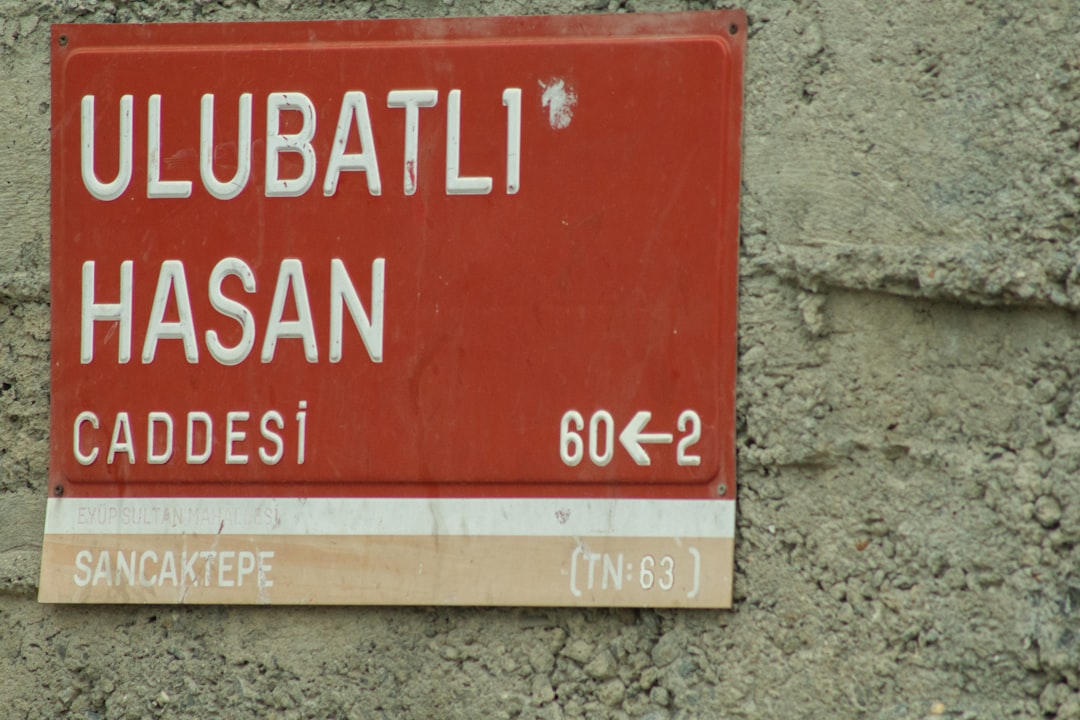On December 14, 2003, President George W. Bush delivered a momentous announcement that reverberated across the globe. The news of Saddam Hussein’s capture marked a pivotal moment in the Iraq War and the broader context of U.S.
foreign policy in the Middle East. Bush’s declaration not only signified a significant victory in the fight against terrorism but also aimed to bolster the morale of American troops and the nation as a whole. The capture of one of the most notorious dictators of the 20th century was framed as a crucial step toward establishing democracy in Iraq and promoting stability in a region long plagued by conflict.
Bush’s announcement was laden with implications, both immediate and far-reaching. It was not merely a statement of military success; it was a narrative that sought to redefine the U.S. mission in Iraq.
By presenting Hussein’s capture as a triumph of justice, Bush aimed to rally support for his administration’s policies and reassure a war-weary public. The announcement was met with a mixture of relief, skepticism, and hope, setting the stage for a complex interplay of reactions that would unfold in the days and months to come.
Key Takeaways
- President George Bush’s announcement of Saddam Hussein’s capture marked a significant moment in the Iraq War.
- Saddam Hussein’s regime and capture were key events in the conflict in Iraq and the Middle East.
- The timeline leading to Saddam Hussein’s capture involved a series of military operations and intelligence efforts.
- President Bush’s speech announcing Saddam Hussein’s capture was met with both domestic and international reactions.
- The capture of Saddam Hussein had significant political and military implications for Iraq and the Middle East.
Background: Saddam Hussein’s Regime and Capture
Saddam Hussein’s regime, which ruled Iraq with an iron fist for over three decades, was characterized by brutal repression, widespread human rights abuses, and aggressive military campaigns against neighboring countries. His leadership was marked by the use of chemical weapons against Kurdish populations, the invasion of Iran, and the occupation of Kuwait, which ultimately led to the Gulf War in 1990.
The capture of Saddam Hussein came after months of intense military operations aimed at dismantling his regime following the U.S.-led invasion of Iraq in March 2003. Despite being ousted from power, Hussein managed to evade capture for several months, leading to speculation about his whereabouts and the potential for his return to power. His eventual capture in a small underground hideout near Tikrit was a significant turning point in the conflict, symbolizing not only the end of his tyrannical rule but also the challenges that lay ahead for Iraq as it sought to rebuild itself in the aftermath of war.
Timeline: Events Leading to Saddam Hussein’s Capture

The timeline leading up to Saddam Hussein’s capture is marked by a series of critical events that shaped the course of the Iraq War. Following the initial invasion in March 2003, U.S. forces quickly toppled Hussein’s regime, but the subsequent occupation faced fierce resistance from insurgent groups and loyalists.
By mid-2003, it became clear that stabilizing Iraq would be far more challenging than anticipated. The insurgency gained momentum, and attacks on coalition forces became increasingly frequent. In the months leading up to his capture, U.S.
intelligence efforts intensified as they sought to locate Hussein. The establishment of a $25 million bounty on his head underscored the urgency of his capture. Reports indicated that he was moving frequently between various hideouts, relying on a network of loyalists who provided him with support.
The culmination of these efforts came on December 13, 2003, when U.S. troops conducted a raid based on intelligence that led them to a farmhouse in ad-Dawr, where they discovered Hussein hiding in a spider hole. His capture was not only a tactical victory but also served as a symbolic blow to those who had supported his regime.
The Announcement: President Bush’s Speech
| Metrics | Data |
|---|---|
| Speech Date | September 11, 1990 |
| Duration of Speech | 11 minutes |
| Viewership | 48 million |
| Topics Covered | Iraq’s invasion of Kuwait, US response, international coalition |
| Impact | Increased public support for US intervention in the Gulf War |
In his address following Saddam Hussein’s capture, President Bush emphasized the significance of this event in the context of the broader war on terror. He framed Hussein’s arrest as a victory for freedom and justice, asserting that it would help pave the way for democracy in Iraq. Bush’s speech was carefully crafted to resonate with both domestic audiences and international allies, portraying the capture as a decisive moment in the fight against tyranny.
Bush’s rhetoric was infused with themes of hope and resilience. He spoke directly to the American people, acknowledging their sacrifices while also urging them to remain steadfast in their commitment to rebuilding Iraq. The president highlighted that Hussein’s capture would not only bring closure to many victims of his regime but also serve as a warning to other dictators who might threaten global peace.
This narrative aimed to reinforce public support for ongoing military operations while also justifying the sacrifices made by U.S. forces.
Reactions: Domestic and International Responses
The announcement of Saddam Hussein’s capture elicited a wide range of reactions both domestically and internationally. In the United States, many citizens expressed relief and celebration at the news, viewing it as a long-awaited justice for those who had suffered under Hussein’s brutal regime. Political leaders from both parties praised the military’s efforts and acknowledged the significance of this achievement in restoring stability to Iraq.
However, there were also voices of skepticism regarding the implications of Hussein’s capture. Critics questioned whether his arrest would lead to lasting peace or merely exacerbate existing tensions within Iraq. Internationally, reactions were mixed; some nations lauded the U.S.
efforts while others criticized the invasion itself and expressed concerns about the future trajectory of Iraq post-Hussein. The capture was seen as a potential turning point, yet many remained cautious about its long-term impact on regional dynamics.
Impact: Political and Military Implications

The political and military implications of Saddam Hussein’s capture were profound and multifaceted. In the immediate aftermath, U.S. officials hoped that his arrest would weaken insurgent forces by removing a central figure around whom they could rally.
The expectation was that capturing Hussein would lead to a decrease in violence and an increase in cooperation among Iraqi factions as they sought to establish a new government. However, reality proved more complex than anticipated. While some hoped for a swift transition toward stability, Iraq continued to experience significant unrest and violence in the months following Hussein’s capture.
Sectarian tensions flared as various groups vied for power in the vacuum left by his regime. The challenges of nation-building became increasingly apparent, raising questions about U.S. strategy and commitment in Iraq.
Analysis: Significance of Saddam Hussein’s Capture
The significance of Saddam Hussein’s capture extends beyond its immediate military implications; it represents a critical juncture in U.S.-Middle East relations and global perceptions of American power. For many, Hussein’s arrest symbolized justice for victims of tyranny and served as a testament to U.S.
It was framed as part of a larger narrative about promoting democracy and human rights in regions long dominated by authoritarian rule. Yet, this narrative was complicated by the realities on the ground in Iraq. The ongoing violence and instability raised questions about whether capturing one individual could truly alter the course of history or if deeper systemic issues needed addressing. The complexities surrounding governance, sectarian divisions, and regional dynamics highlighted that while Hussein’s capture was significant, it was not a panacea for Iraq’s myriad challenges.
Media Coverage: Coverage of the Capture
Media coverage surrounding Saddam Hussein’s capture was extensive and varied widely across different outlets and platforms. Major news networks provided live updates as details emerged about his arrest, showcasing images of jubilant Iraqi citizens celebrating what they perceived as liberation from tyranny. Coverage often focused on the dramatic nature of his capture, emphasizing the clandestine operation that led to his discovery.
However, media narratives also grappled with the implications of this event for Iraq’s future. Analysts debated whether Hussein’s arrest would lead to stability or further chaos, reflecting broader concerns about U.S. involvement in Iraq and its long-term consequences for regional security.
The media played a crucial role in shaping public perception, framing Hussein’s capture as both a victory for justice and a reminder of the complexities inherent in nation-building efforts.
Public Opinion: Polls and Surveys
Public opinion regarding Saddam Hussein’s capture reflected a complex landscape marked by both optimism and skepticism. Initial polls indicated that many Americans viewed his arrest positively, seeing it as validation for U.S. military efforts in Iraq and an important step toward restoring order in the country.
Support for President Bush’s handling of foreign policy saw a temporary boost as citizens rallied around this significant achievement. However, as time passed and violence persisted in Iraq, public sentiment began to shift. Subsequent surveys revealed growing concerns about the effectiveness of U.S.
strategies in stabilizing Iraq and questions about whether capturing Hussein had truly made a difference on the ground. This evolving public opinion underscored the challenges faced by policymakers as they navigated an increasingly complex situation marked by uncertainty.
Future Implications: Effects on Iraq and the Middle East
The future implications of Saddam Hussein’s capture were profound not only for Iraq but also for the broader Middle East region. In Iraq, his arrest was seen as an opportunity for political transformation; however, it also exposed deep-seated sectarian divisions that would continue to plague governance efforts for years to come. The power vacuum left by his regime prompted various factions to vie for control, leading to increased violence and instability.
Regionally, Hussein’s capture had ramifications that extended beyond Iraq’s borders. It influenced perceptions of U.S. interventionism and raised questions about American credibility in promoting democracy abroad.
As neighboring countries observed developments in Iraq, concerns grew about potential spillover effects on their own political landscapes. The complexities surrounding governance, sectarianism, and regional rivalries underscored that while capturing one dictator might represent progress, it did not guarantee lasting peace or stability.
Legacy of Saddam Hussein’s Capture
The legacy of Saddam Hussein’s capture is multifaceted and continues to shape discussions about U.S.-Middle East relations today. While it represented a significant moment in the fight against tyranny and terrorism, it also highlighted the complexities inherent in nation-building efforts following regime change. The challenges faced by Iraq post-Hussein serve as a reminder that capturing an individual does not equate to resolving systemic issues within a society.
Ultimately, Hussein’s arrest remains emblematic of broader themes surrounding justice, accountability, and governance in post-conflict settings. As Iraq continues to navigate its path toward stability and democracy, lessons learned from this pivotal moment will undoubtedly inform future approaches to international intervention and conflict resolution in regions grappling with similar challenges.
In the wake of George Bush’s speech announcing the capture of Saddam Hussein, many have reflected on the broader implications of this pivotal moment in history. An interesting article that delves into the details surrounding this event can be found on Hey Did You Know This. The article provides a comprehensive overview of the circumstances leading up to Hussein’s capture and the subsequent impact on international relations. For those interested in exploring this topic further, you can read more about it by visiting this article.
WATCH NOW! How the US Hunted and Captured Saddam Hussein: The Untold Story of Operation Red Dawn
FAQs
What was George Bush’s speech about the capture of Saddam Hussein?
In his speech, George Bush announced the capture of Saddam Hussein, the former president of Iraq, by US forces. He described the capture as a significant victory in the war on terror and a major step towards bringing stability to Iraq.
When did George Bush deliver the speech about the capture of Saddam Hussein?
George Bush delivered the speech on December 14, 2003, shortly after the capture of Saddam Hussein by US forces in a farmhouse near his hometown of Tikrit, Iraq.
What impact did the capture of Saddam Hussein have on the Iraq War?
The capture of Saddam Hussein was seen as a major milestone in the Iraq War. It dealt a significant blow to the insurgency and boosted the morale of US and coalition forces. It also raised hopes for a more stable and secure Iraq.
Did the capture of Saddam Hussein end the Iraq War?
While the capture of Saddam Hussein was a significant event in the Iraq War, it did not mark the end of the conflict. The war continued for several more years, with ongoing insurgency and sectarian violence in Iraq.
What was the reaction to George Bush’s speech about the capture of Saddam Hussein?
The speech was met with widespread attention and praise from US and coalition allies. It was seen as a major victory in the war on terror and a significant development in the effort to stabilize Iraq.
